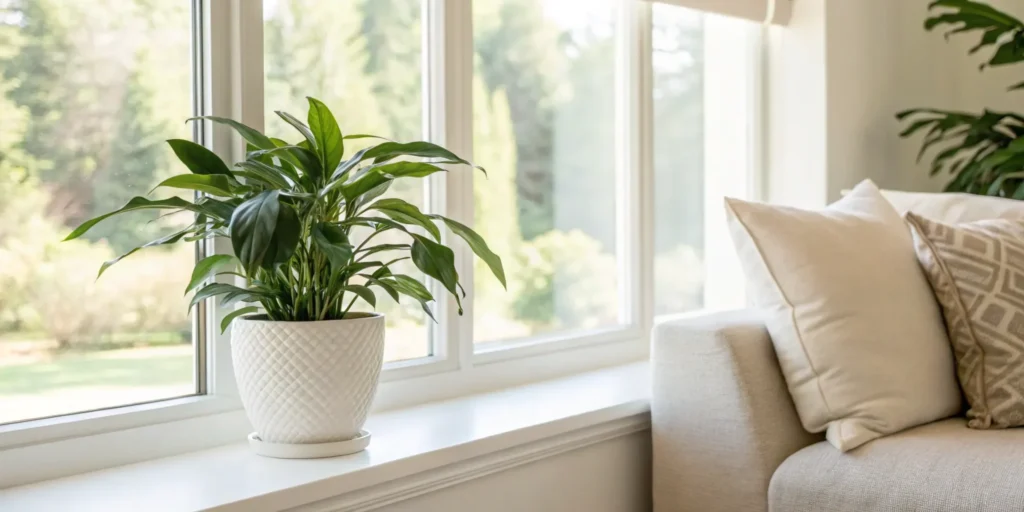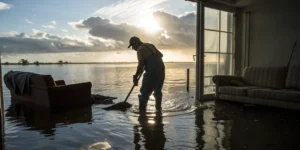Discovering mold in your home is one of those moments that makes your heart sink. Maybe you’ve noticed that musty smell, spotted dark patches spreading across your walls, or you’re worried about your family’s health. The stress is real, and the worry is completely understandable. You want to fix this problem quickly, but you also want to fix it right.
Here’s the truth: choosing the right mold remediation company is just as important as addressing the mold itself. The wrong company can leave mold behind, cause it to spread further, or charge you for unnecessary work. The right company will eliminate the problem safely, protect your family’s health, and give you lasting peace of mind.
This article will walk you through five critical questions that separate the professionals from the pretenders. Think of this as your confidence-building toolkit—a way to walk into every consultation feeling informed, empowered, and ready to make the best decision for your home and family.
Why You Can’t Afford to Skip These Questions
This isn’t just about getting the lowest price. This is about protecting your family’s health and safeguarding your home’s value. Mold can cause respiratory issues, allergic reactions, and in some cases, serious health complications. Incomplete remediation means the problem will return, often worse than before.
These questions are your filter. They’ll help you quickly identify which companies have the expertise, integrity, and accountability you need—and which ones you should cross off your list immediately.
The 5 Critical Questions to Ask Before You Hire
1. “Are You Licensed, Insured, and Certified?”
Why This Is Critical:
This question protects you on multiple levels. Let’s break down each component:
- License: Depending on your state or locality, mold remediation companies may be required to hold specific licenses. This proves they meet basic legal and regulatory standards to operate in your area.
- Insurance: This is non-negotiable. You need to verify they carry:
- General liability insurance
- Worker’s compensation (so you’re not liable if a worker is injured on your property)
- Pollution or mold-specific liability insurance (crucial because standard policies often exclude mold-related claims)
- Certifications: These demonstrate specialized training and expertise. The gold standard is certification from the IICRC (Institute of Inspection, Cleaning and Restoration Certification), specifically the AMRT designation (Applied Microbial Remediation Technician).
What a Good Answer Sounds Like:
“Yes, we are fully licensed in [State/City]. We carry $2 million in general liability insurance and a specific pollution liability policy. Our lead technicians are IICRC certified in AMRT, and we’d be happy to provide proof of all credentials before we begin any work.”
Red Flags:
Vague answers like “we’re insured” without specifics, no mention of pollution liability coverage, expired certifications, or any hesitation to provide documentation immediately.
2. “Can You Provide Recent, Local References?”
Why This Is Critical:
Past performance is the best predictor of future results. A company with a solid track record will have satisfied customers who are willing to vouch for their work. Local references are especially valuable—they’re more likely to be genuine, and you can even drive by to see the property if needed.
What a Good Answer Sounds Like:
“Absolutely. We can provide you with contact information for three recent clients in the area who had similar mold issues. We’ll just need to get their permission first out of respect for their privacy. We can usually have that for you within 24 hours.”
Red Flags:
Inability to provide any references, only offering references from years ago, providing out-of-state references when they claim to work locally, or becoming defensive when asked.
3. “What is Your Detailed Remediation Plan & Philosophy?”
Why This Is Critical:
This question separates the professionals from the amateurs. A qualified mold remediation company follows a scientific, systematic process—not just a “spray and pray” approach. Listen carefully for these key elements in their answer:
- Containment: How they will seal off the affected area to prevent mold spores from spreading to clean areas of your home
- Air Filtration: Use of HEPA air scrubbers and negative air pressure systems to capture airborne spores
- Removal: The physical removal and disposal of contaminated materials (not just surface cleaning or “killing” the mold)
- Cleaning: Thorough cleaning of all surfaces within the containment area using appropriate methods
What a Good Answer Sounds Like:
“We follow the IICRC S520 standard for mold remediation. First, we establish containment using plastic sheeting and create negative air pressure with HEPA air scrubbers. Then we carefully remove all contaminated materials—drywall, insulation, whatever is affected. After removal, we HEPA vacuum and clean all remaining surfaces. We also address the moisture source because without fixing that, the mold will return.”
They should be able to walk you through each step and explain why it’s necessary.
Red Flags:
Mentioning fogging, ozone treatment, or bleach as the primary solution. Any vague plan that lacks specific details about containment, air filtration, or proper disposal. Companies that promise to “kill the mold” without removing contaminated materials.
4. “Do You Perform Post-Remediation Verification or Clearance Testing?”
Why This Is Critical:
This is your proof that the job was actually completed successfully. Without post-remediation testing, you’re taking the company’s word that the mold is gone. The key here is independent testing—performed by a third-party Industrial Hygienist or mold assessor who has no financial stake in passing or failing the project.
Some homeowners skip this step to save money, but it’s the only objective way to confirm your home is safe.
What a Good Answer Sounds Like:
“Yes, we always recommend post-remediation verification testing performed by an independent Industrial Hygienist or certified mold assessor. We consider the job complete only when we receive a ‘pass’ or ‘clearance’ report from them. We’re happy to provide recommendations for independent testers, but you’re welcome to choose your own.”
Red Flags:
The company insists on doing their own testing (huge conflict of interest), says testing isn’t necessary, claims they have “equipment that proves it’s clean,” or has never heard of clearance testing.
5. “Do You Offer a Warranty or Guarantee?”
Why This Is Critical:
A warranty shows the company stands behind their work and gives you recourse if the mold returns due to a failure in their remediation process. It’s a sign of confidence and accountability.
What a Good Answer Sounds Like:
“Yes, we offer a 5-year warranty on our workmanship. If mold returns in the treated area due to a failure in our remediation process, we will come back and address it at no additional cost. The warranty doesn’t cover new water leaks or moisture problems, but as long as you maintain proper humidity levels and there are no new water intrusions, you’re covered. We’ll provide all the terms in writing.”
Red Flags:
No warranty offered at all, extremely short warranty periods (like 30-90 days), or vague promises without clear written terms. Also be cautious of warranties that are loaded with so many exclusions they’re essentially meaningless.
Bonus: A Critical Mistake to Avoid
The “Free Inspection” Trap and Conflict of Interest
Here’s something many homeowners don’t realize: companies that offer “free mold inspections” often have a built-in conflict of interest. They inspect your home, conveniently find a massive (and expensive) mold problem, and then offer to be the hero who fixes it.
The problem? They have a financial incentive to find—or exaggerate—problems.
A Better Approach: Consider hiring an independent mold assessment company or Industrial Hygienist first. They’ll test your home, identify the extent of the problem, and provide an unbiased report. Yes, you’ll pay for this service (typically $300-$800), but you’ll get an honest diagnosis. You can then use that report to get accurate bids from remediation companies.
This approach protects you from unnecessary work and gives you leverage in negotiations. It’s an investment in peace of mind.
Your Home, Your Health, Your Choice
You now have the five critical questions that will help you separate qualified, trustworthy professionals from companies you should avoid. By taking the time to ask these questions and carefully evaluate the answers, you’re doing the most important thing you can do: protecting your family’s health and your home’s value.
This situation might feel overwhelming right now, but you’re not helpless. You’re informed. You’re prepared. And you’re about to make a decision from a position of strength rather than fear.
Before you pick up the phone to call any company, save this list. Take it with you to consultations. And remember—any company that gets defensive or evasive when you ask these questions has just shown you exactly who they are. The right company will welcome your questions because they know they have the right answers.
You’ve got this.
Frequently Asked Questions (FAQ)
How much does mold remediation cost?
Mold remediation costs vary widely depending on the extent of the problem, the location of the mold, and how much material needs to be removed. Small projects (like a bathroom with limited mold) might cost $500-$2,000, while larger projects involving multiple rooms or structural components can range from $3,000 to $10,000 or more. Always get multiple written estimates and make sure they include post-remediation testing.
Can I just use bleach to kill the mold myself?
Bleach is not an effective solution for mold remediation. While it may remove surface staining on non-porous materials, it doesn’t kill mold roots that have penetrated porous materials like drywall or wood. Additionally, bleach doesn’t address the underlying moisture problem, so the mold will return. More importantly, DIY attempts often spread mold spores throughout your home, making the problem worse. For any mold growth larger than about 10 square feet, hire a professional.
How long does the mold remediation process take?
A typical mold remediation project takes 1-5 days depending on the size and complexity. Small, contained areas might be completed in one day, while larger projects requiring extensive demolition and multiple rooms could take a week or more. The timeline should include containment setup, removal, cleaning, and verification testing. Any company that promises to “fix” a significant mold problem in just a few hours is likely cutting corners.
What’s the difference between mold remediation and mold removal?
“Mold removal” is actually a misleading term because it’s impossible to remove all mold spores from any environment—they exist naturally everywhere. “Mold remediation” is the correct term, and it means returning mold levels to natural, safe levels by removing contaminated materials and cleaning affected areas. A professional company will use the term “remediation” because it reflects a realistic, science-based understanding of how mold works.
Work With SuperClean Restoration Services: A Company You Can Trust
Choosing a mold remediation company is a critical decision for your home’s safety and your family’s health. The right choice means a permanent solution and peace of mind; the wrong choice can make the problem worse. This guide empowers you with the five essential questions you must ask any potential contractor. Use this toolkit to filter out unqualified companies, identify true professionals, and confidently hire a team you can trust.
Now that you know what to ask, put us to the test. We are a licensed, insured, and IICRC-certified company that follows strict remediation protocols and stands behind our work with a written warranty. We welcome your toughest questions because we have the right answers. Contact us today.
Call for a Transparent Consultation: 844-888-0837
Email the Certified Experts: Info@supercleanrestorationpb.com




